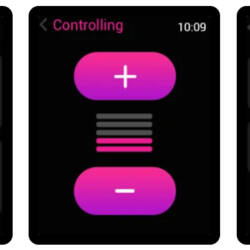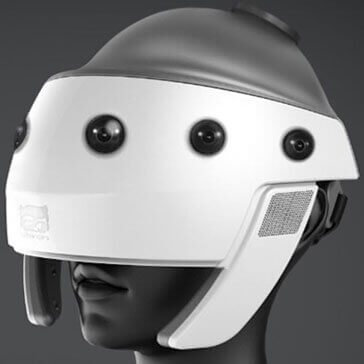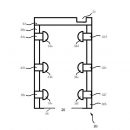The WeTac Electrotactile Glove Gives VR Users a Hyper-Realistic Sense of Touch
WeTac’s Haptic breakthrough is lighter, wireless, and more flexible than existing haptic technologies

A team of researchers at City University of Hong Kong have developed a hyper realistic method of providing virtual and augmented reality users with a sense of touch.
Spearheaded by biomedical engineering associate professor Dr. Yu Xinge, WeTac is a hydrogel glove fitted with 32 miniature electrotactile stimulation pads. Using precisely controlled current, wearers can “feel” as if they’re handling digital objects.
One size or voltage doesn’t fit all
Haptic technology is having a moment, yet delivering a realistic experience to VR and augmented reality users still remains a challenge. Existing haptic technology worn on the hand is typically bulky, rigid, and constrained by cables.
WeTac’s haptic system is wireless, ultrathin, and compact. A single WeTac unit weighs less than 20 grams, comprising only the hydrogel glove, a lower-forearm-mounted lithium-ion battery, and the necessary wireless Bluetooth circuitry.
Electrotactile tech is not without its drawbacks. Dr. Xinge explained to Tech Xplore, “Individuals have different sensitivities, the same feedback strength might be felt differently.”
WeTac’s ability to easily and effectively conform to an individual’s hand solved that issue. After precisely monitoring how much or little voltage is required to replicate a life-like sense of touch, the WeTac system can reproduce it on demand.
The promise of full immersion
“We believe that this is a powerful tool for providing virtual touching,” Dr. Xinge said, speculating on the future of WeTac, “and is inspiring for the development of the metaverse.”
Since the first person mounted a pair of tiny TVs over their eyes, we’ve longed to see and feel in virtual reality. Along the way, we’ve seen everything from haptic holograms to a network of wires.
But aside from developing a neural interface – as in plugging our brains directly into a computer – Dr. Xinge’s lightweight, wireless, and individually adaptable electrotactile approach is one of the most promising.
Based on electrical nerve stimulation, there’s no reason why it couldn’t eventually replicate an even wider variety of physical sensations: temperature, texture, skin, hair, liquids, coarse or fine, real or fantasy – one day, we’ll slip on a glove and feel anything or anyone you want.
But why stop with just our hands? Line a full-body suit with microscopic stimulators, don a pair of goggles, and there’ll be nothing we couldn’t virtually see, touch, or sexually (ahem) engage with.

Beyond the body
As far as technosexual fantasies go, a completely-immersive mix of haptics and VR isn’t especially new or particularly original.
So let’s take the gloves off. Resisting the urge to say “literally”, imagine how attaching electrotactile stimulation points to the world around us could change our experience.
Erotic sculptures might feel like sweat-slick skin, erotic books could lick our fingers when turning their pages, our furniture could caress us, cups kiss us when taking a drink, and carpets could seductiely massage our feet.
The sex tech possibilities with electrotactile tech are endless. Anything can feel like everything, from ticklish feathers to luxurious fur, cold steel to warm leather.
Touching and being touched
While the potential of electrotactile technology to expand what human sexuality is and might become is exciting, what is most exciting about this technology is that this advanced haptic technology could transcend the physical distance separating and allow us to receive a reassuring hug – right when we need it most.
Image Sources: Flickr, Cottonbro Studios

















